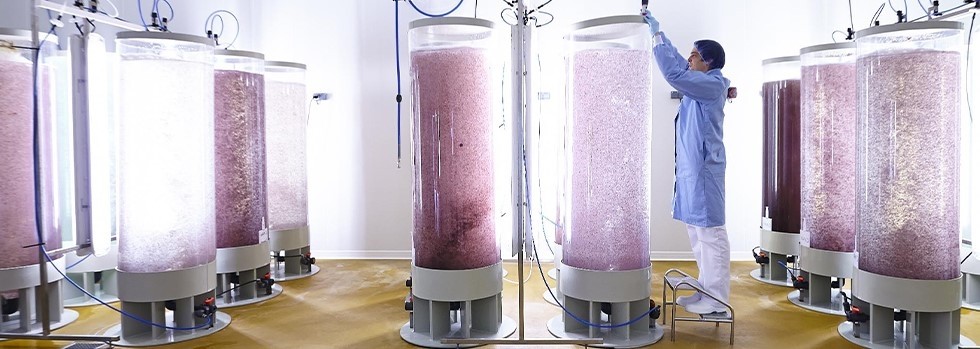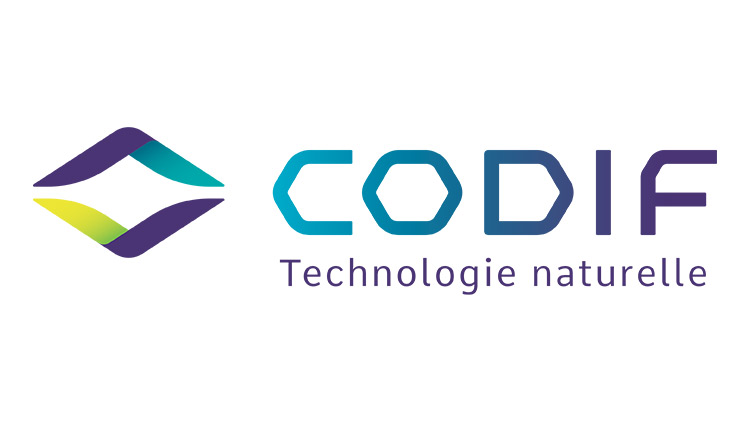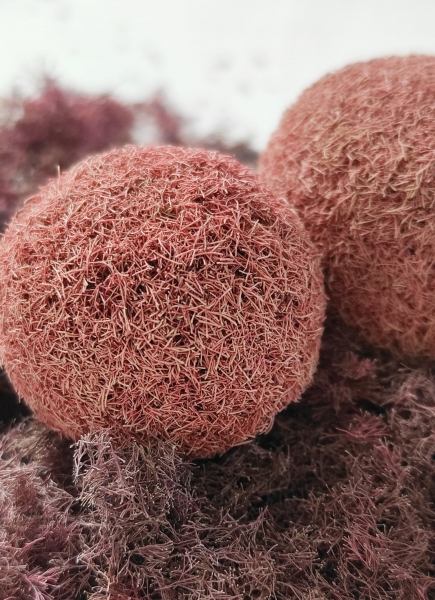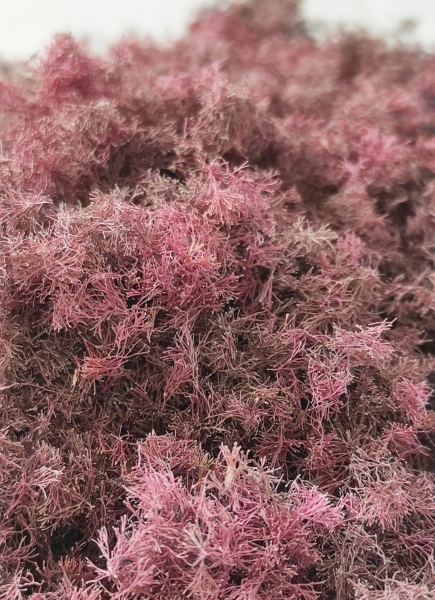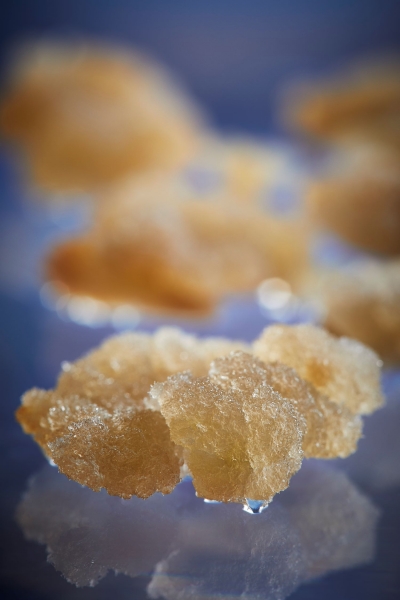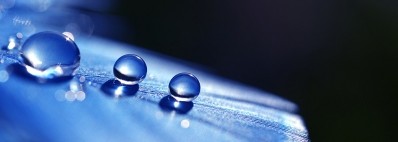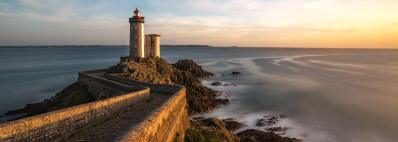Promotional Features
Turning a new page in the history of photo-bioreactor algae culture
In 2006 Codif Technologie Naturelle (CodifTN) collected a 1-milligram fragment of a calcified macroalgae, Jania rubens. Sixteen years later, in 2022, the company passed the one-tonne milestone of dry matter produced. Jania’s distinctive pompon has become the symbol of the company whose culture and history are the best example of Codif’s work and approach to CSR.
Follow the story with Eric Gasparotto, Manager of the Industrial Innovation and Implementation, and Romuald Vallee, Director of Codif TN.
Hello both of you. Can you tell us how the whole thing started?
R.V Everything started in 2006 when we decided to take on a student to write a thesis on ‘Developing a cellular culture of Jania rubens’. The student was Eric. Jania rubens is a macroalgae with incredible properties, but it is slow-growing and there is a significant risk of overexploiting it. So we considered a simple question: how can we grow the algae without having a negative impact on nature? That’s where science and research came in.
E.G We looked at several possibilities. We had to do a number of trials before finally deciding on growing it in a photo-bioreactor. That initial stage alone took a lot of research time.
What were the different steps involved in bringing the project to fruition?
E.G We did everything bit by bit because there was very little culturing of macroalgae in photo-bioreactors at the time and nothing on a large scale. So there was no data available. We had to try several things.
The initial approach we tried was a cellular culture, using protoplasts.1 We had to separate the cells from their cell wall. We succeeded in doing this but the next step was a problem. Once the cells had been separated from their cell wall you had to make them divide to start culturing them. We did not succeed in this, so we turned to another approach: photo-bioreactor culture which we were experienced in using to grow microalgae. Therefore, we adapted and developed the process until we obtained the first culture of a calcified macroalgae in a photo-bioreactor. As far as we know, we were the first to succeed with this type of culture and it is still completely unique today.
R.V Once the culturing process had been thoroughly developed, we started industrial production of Jania in 2012, beginning with the largest photo-bioreactors available on the market, which were 250 litres. But we soon found that was too small. So we had custom-made tanks manufactured to increase our capacity to 500 litres and then 750 litres. But at a certain point it wasn’t possible to increase the size of the tanks further due to logistical constraints. Therefore, we have had to use more reactors and invest in a larger biotechnology hall. Our algae culture technology continues to develop and improve continuously.
E.G The algae hides a lot of surprises and remains a challenge for our research teams. Despite the increase in production, there are still many unknowns. There are numerous factors that can influence the culture. Yet optimising one factor achieves nothing if another factor isn’t optimised at the same time. We found this out when we were working on algae metabolic orientation protocols to make it secrete compounds we were interested in.
The best example is the production of taurine by Jania. When we started we obtained variable taurine levels, with an average of 900 to 1000 mg of taurine per dry kilo of Jania (ppm). It was by learning to control several culturing parameters that enabled us to increase that to more than 1500 ppm in a consistent manner. The main variables were the nitrogen input, the amount and temperature of the air entering the culture tanks and the quality of drying, which has to be performed quickly.
This year marks an important milestone in your cultivation of Jania…
E.G This year, after 10 years of industrial production, we reached a total of one tonne of dry matter produced. That tonne was produced from a single purified fragment which has been multiplied and which we use as the strain to seed all our cultures. The fragment weighs about 1 milligram dry. It’s quite interesting to look at the multiplication factor. We have gone from 1 milligram to 1 billion milligrams.
R.V In my view, the result obtained after 10 years, as well as the Jania culture that we have established, is the best example of Codif’s CSR approach. We collected the strain, purified it and have not had to touch nature since. That’s important. We can leave the algae alone in its natural environment surrounded by other algae and sea creatures.
Since Codif was established, we have tried to produce innovative actives while staying true to our environmental values. We call this Bioth-Ecology: using high value-added biotechnology to cultivate plants and algae which are identical to those in the natural environment. For us Bioth-Ecology cultivation represents the ecology of the future and enables us to ‘copy and paste’ from the living world without affecting the resource ecosystem that we are using. In this culture method, the specific conditions of life that correspond to the organism’s natural habitat are recreated. That’s what we have done with the culture of Jania rubens.
What do you see as future challenges for culturing algae in a photo-bioreactor?
E.G For us, the next step is to automate our culture methods. Currently, culturing requires a lot of human intervention. This is becoming more and more difficult for our production personnel. We have 48 culture tanks and they have to perform operations on each one twice a day. In parallel demand continues to grow and so production has to increase as well.
R.V This means we have asked a company to develop a process control system to accurately control the inputs. The results will be assessed for six to eight months before approving implementation. Given that culturing takes a long time, we have to ensure good results can be achieved consistently before applying an automated control system to all our tanks.
E.G In parallel with automation, we are also working on the lighting conditions for the culture. Changing to LED lighting greatly reduces energy consumption. But once again, simply changing the lighting has an effect on productivity that cannot be ignored and has required us to modify our culture protocol. We are also working on improving our use of air. The configuration of our tanks means we have to supply them with a large amount of compressed air. This is the most energy intensive input. Therefore, it’s a priority for optimisation.
Are there any other projects like this at Codif TN?
R.V We are continuously looking to implement culture methods that have minimal environmental impact as possible. In 2022 for instance, we launched a new active called Vitasmoothy. It is derived from de-differentiated vegetal cells. This is a first for Codif TN. Our entire production of Vitasmoothy comes from a few pieces of lavender leaf.
E.G This culture also made us design and develop our own industrial culture tanks to get away from the plastic containers that are generally used for culturing plant cells in a liquid medium. We now only work with washable and re-usable containers. We have saved 72 plastic culture bags for every one hundred kilograms of active manufactured.
R.V Our search for a way to produce high quality active ingredients in an environmentally friendly way started a long time ago. And we do not plan on stopping now that we have made so much progress.
References
1. Protoplasts are plant cells without a cell wall, experimentally obtained by digestion of the pectocellulosic wall.
